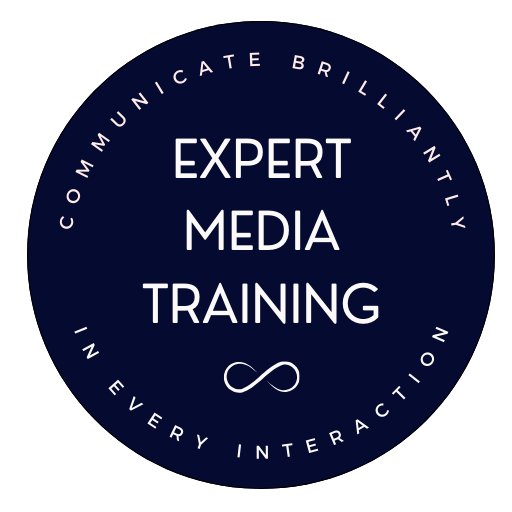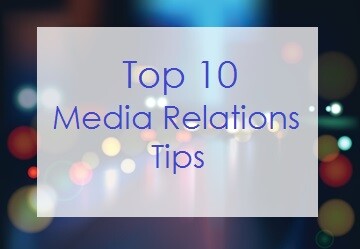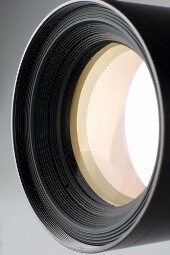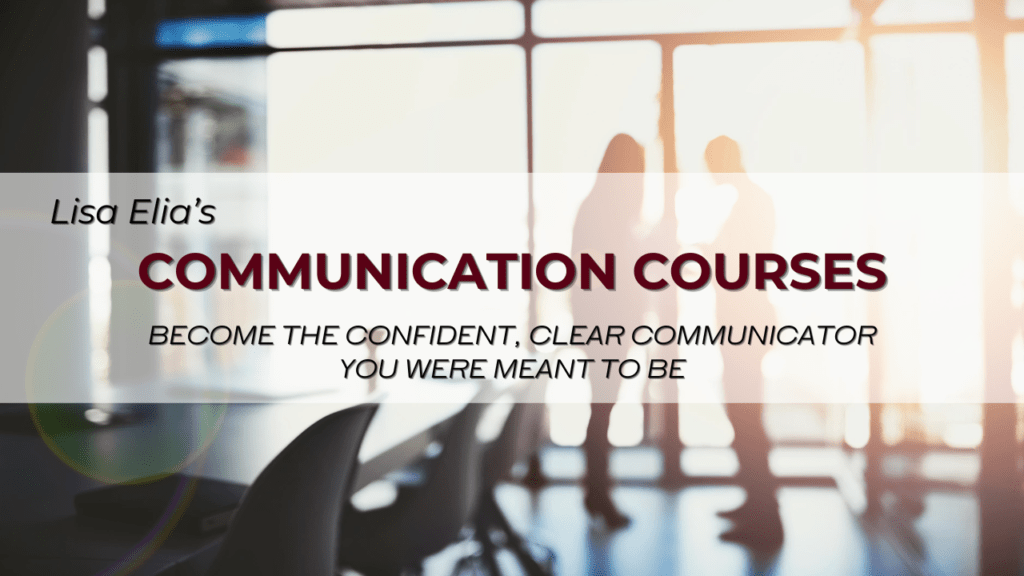Monday, September 17, 2012 | Media Relations, Messaging
Use these tips to learn how to become an expert people trust.
1. Educate yourself.
Even if you hold an advanced degree in your field, there is always more to learn in your own field and in other arenas that will help you become more creative and resourceful. This will automatically spill into your communications.
2. Get the facts.
Add facts and figures to some of your articles to substantiate your opinions, but only include information from reputable, high-level sources, such as top universities, research institutions or government agencies that provide solid research.
3. Know your industry.
Keep up with the trends and discussions occurring in your industry so you can comment on them when asked by potential clients, colleagues and members of the media.
4. Keep up with technology.

Know specifically how current events and technological developments affect your industry. For example, does new technology influence the products or services you can provide or the way you deliver them? How do new developments affect your followers?
5. Have an opinion.
Quite often people are so afraid of alienating some people or not appealing to everyone that they don’t commit to an opinion. However, you will attract “your tribe”, those people who truly resonate with you, ONLY when you clearly state your opinion.
6. Play nicely with others.
Mingle with other experts in your field so they consider you when seeking colleagues to share stages with them or to refer to the media or potential clients they cannot or choose not to serve.
7. Be the solution.
Don’t merely state problems. Provide concrete solutions, tips and resources to help solve those problems.
8. Anticipate their needs.
It’s important to not only stay in touch with the needs of your followers/your audience, but to know what they need before they know they need it. This is how you can advise them on mistakes to avoid and shortcuts to take to help them succeed more easily.
9. Don’t be a stranger.
Whether you share information through your blog, Facebook, a newspaper column or TV segments, keep giving your audience more good information. Don’t tease them with some golden nuggets of wisdom and then disappear for months on end…unless you’re doing something amazing for humanity in some remote place with no Internet access.
10. Get fresh.
Add something new and fresh to the world conversation. People are always looking for creative approaches to old problems, new opportunities that they haven’t considered and hope that there are untraveled roads to be traveled. Show them the way.
Now that you know how to become an expert, do you need tips on authenticity, messaging or branding?
Read the blog posts below.
Authenticity and Your Message – a Note from a Media Trainer
https://expertmediatraining.com/authenticity-message-from-media-trainer
Media Training Tips on The Language of Your Brand in Media Interviews
https://expertmediatraining.com/brand-language-media-training-tips
If you want to share tips on how to become an expert with your friends, you can do so by using the share buttons below.
Wednesday, September 12, 2012 | Media Relations, Media Training, Messaging, On-camera
Many years ago, when I was working as a publicist, I had a client who INSISTED that she didn’t need media training because she had been interviewed by the press and had created some of her own promotional videos. When I booked her on an NBC segment, she was unaware that a second camera was on her while the interviewer spoke. What was caught on camera? It was my client looking down at the ground, appearing disengaged. NOT GOOD! Easily avoidable media interview mistakes like this are the reason I now insist on media training my clients, or at least doing a mock interview or two with them, to make sure they’re truly camera-ready and media-ready.
If you plan or hope to be interviewed by media outlets, from the smallest online radio shows to the largest national TV shows, I encourage you to invest in media training from an experienced pro, so that you become aware of media interview mistakes that can be avoided. In the meantime, this article will help you avoid some of the most common mistakes people make in media interviews.
These are five media interview mistakes to avoid:
Media Interview Mistake # 1: Assuming you’re “a natural” because you’re a good public speaker or you’re good at making your own promotional videos. When you control the situation, it’s much easier to shine. When you have the pressure of answering questions quickly with cameras on you or a live audience listening in, it can be much more challenging and can fluster even the most confident people.
Tip: Practice being interviewed by a challenging interviewer. (When I conduct media training sessions, one of the many things I do is to play “jerky reporter” and ask tough, sometimes obnoxiously rude questions and then I help you develop answers and strategies to deal with this type of situation in the real world.)
Media Interview Mistake # 2: Providing long, meandering answers to questions. Many TV and radio interviews are very brief, lasting just a few minutes. So, you have to provide concise, meaningful responses to questions. Brevity is important in print interviews, too. A magazine editor I know said that one interview subject she spoke with went on and on about himself for so long during a telephone interview that she stopped taking notes and started cleaning her house…while he was still blabbing on about himself. Don’t be THAT person.
Tip: Get your messaging down. Think of answers to the most common questions you think you will get and rehearse them, but not word-for-word; just get the content down. (Messaging is one of the first things I work with clients to develop. It informs everything, from the way we develop your press kit materials, to the verbiage used on your web site, to the way you introduce yourself to people.)
Media Interview Mistake # 3: Not knowing enough about the media outlet and its audience. The more you understand the media outlet you’re being interviewed for, the better able you will be to communicate with the interviewer or host appropriately and provide examples or anecdotes that suit the outlet’s audience.
Tip: Research the media outlet and the interviewer prior to your interview. If you’re going to be on a TV show, watch it. If you’re going to be on a radio show that you’re not able to access, spend time on the station’s web site to get a feel for it. Read any print publication where you will be interviewed and, in particular, read articles authored by the person who will be interviewing you.
Media Interview Mistake #4: Trying to be funny when you’re not. Not everyone has the gift of good comedic delivery. While humor is welcomed in many interviews, don’t try to force it because it won’t come off well.
Tip: Be the best version of yourself. Don’t try to be someone you’re not. Sometimes a straightforward, clear interview is EXACTLY what the outlet wants and EXACTLY what will attract potential clients or speaker bookers or sponsors who may be watching or listening to you.
Media Interview Mistake #5: Being unaware of the camera. You can’t just BE on camera and forget about, although the most polished show hosts and guests make it look that way.
Tip: Ask how much of your body is included in the shot and where the camera operator wants you to look. Sometimes you will be asked to look at the camera, sometimes next to it and sometimes somewhere else. It varies from show to show.
There’s much more to share about techniques to control your nerves and manage your energy, how to deliver your message in pyramid form, how to incorporate a call to action and lots of other techniques. However, true media training is experiential. There’s nothing like being in the process and learning in a hands-on (or on-camera) way.
By dodging these media interview mistakes, your interviews will run smoothly, and you’ll be more likely to be interviewed again!
Share these media interview mistakes to avoid on social media, by using the share buttons below.
Now that you know some of the most common media interview mistakes to avoid, do you need additional media training resources?
Here are some resources that you can access on our site.
Prepare for TV Interviews BEFORE You Book One
https://expertmediatraining.com/prepare-for-tv-interviews-media-trainer-tips/
Media Interview Checklist
https://expertmediatraining.com/media-interview-checklist-from-a-media-trainer/
Media Training Resources
https://expertmediatraining.com/media-training-resources/
Top 10 Media Relations Tips – Media Training Tips
https://expertmediatraining.com/media-training-tips-for-good-media-relations/
Frequently Asked Questions about Media Training
https://expertmediatraining.com/faqs-about-media-training/
If all the world’s a stage, own it while you’re on it!
Friday, August 24, 2012 | Media Relations, Media Training, Messaging
 Media training is about much more than your delivery on camera. Good media trainers educate you on how to work well with all types of people who work in the media — TV producers, radio producers, print editors and writers. They each have specific needs, but there are some things that many members of the media who I have interviewed agreed upon. This is the list of media relations tips that I created, based on what I have learned while working with the media over the last 20+ years.
Media training is about much more than your delivery on camera. Good media trainers educate you on how to work well with all types of people who work in the media — TV producers, radio producers, print editors and writers. They each have specific needs, but there are some things that many members of the media who I have interviewed agreed upon. This is the list of media relations tips that I created, based on what I have learned while working with the media over the last 20+ years.
Top 10 Media Relations Tips from a Media Trainer
1. Be polite and respectful.
Editors, journalists and producers are paid to find stories that will interest their respective audiences. In essence, they are the experts on their particular media outlets. If they tell you that your story is not right for their audience, believe them. This does not mean, however, that you can’t offer them another story unless they have told you that YOU are not right for their respective media outlets. Good manners go a long way, too.
 2. Know your message.
2. Know your message.
You should be so clear on your key messages (i.e., the most important golden nuggets of wisdom you want to share with the world) that you can leave concise voice mail messages or answer questions quickly. (This is one of the first things I work on with my clients.)
3. Read the nonverbal, aural cues.
If you are speaking to a member of the media on the phone and he or she sounds very busy, quickly explain the highlights of your pitch and offer to send the rest of the information via e-mail.
4. Sometimes less is more.
Many media pros have said that they don’t have a lot of time to read through long e-mails, so a couple of paragraphs are all they want.
5. Don’t send attachments with your emails, unless they’re requested.
Most members of the media don’t want you to send attachments with your emails, unless they request them. Put your pitch into the body of the e-mail. Offer to send photos or include links to photos in your e-mail. (Don’t expect the media to download photos from ftp sites: they’re too busy for that.) If you have to send several photos at once, consider using Hightail or another service that allows you to send large files. This will eliminate the need to send several e-mails with photos. It’s all about making it easy for the members of the media to work with you.
 6. Include video links in your e-mails when pitching the media.
6. Include video links in your e-mails when pitching the media.
Make it easy for TV producers to see how fabulous you are on camera. Now, many print outlets and radio shows want video to post on their web sites, so include the video links in all your pitches.
7. Respond to media requests quickly, usually within 24 hours or less.
When writers and producers are working on a story they are usually under a tight deadline. If you don’t respond quickly they may move on to someone else.
8. Don’t try too hard to control the story.
I have seen people lose press opportunities because they tried to re-schedule a TV shoot or they have pushed to have certain content included, instead of what the producer or writer wanted to cover initially. You can offer your ideas, but pushing too hard can unravel a great media placement. Good media relations are developed when you are aware of the difference between a paid ad and a press opportunity. They are vastly different.
9. Offer extra valuable information.
If you have pertinent information, such as common misconceptions or new research, that could help the producer or writer with his/her story, offer it. Members of the media count on experts they interview to fill in the blanks for them.
10. Be prepared.
When you have an interview scheduled, be sure you’re ready! Have your press kit together, have your elevator pitch and key messages so set that they just spill out of you naturally and get media training.
Lisa Elia

If you want to find out if my media training services are a good fit for you, set up a complimentary consultation call.
Here are links to other articles with valuable media relations and media training tips:
For a Media Interview Checklist to keep on hand, click here.
To read my Top 5 Mistakes to Avoid in Media Interviews, click here.
To read How to Create an Online Press Room That the Media Will Love, click here.
For Media Training Tips on The Language of Your Brand in Media Interviews, click here.
Prepare for TV Interviews BEFORE You Book One. Click here.
If you would like to reach our office, call 310-479-0217.


 Media training is about much more than your delivery on camera. Good media trainers educate you on how to work well with all types of people who work in the media — TV producers, radio producers, print editors and writers. They each have specific needs, but there are some things that many members of the media who I have interviewed agreed upon. This is the list of media relations tips that I created, based on what I have learned while working with the media over the last 20+ years.
Media training is about much more than your delivery on camera. Good media trainers educate you on how to work well with all types of people who work in the media — TV producers, radio producers, print editors and writers. They each have specific needs, but there are some things that many members of the media who I have interviewed agreed upon. This is the list of media relations tips that I created, based on what I have learned while working with the media over the last 20+ years. 2. Know your message.
2. Know your message. 6. Include video links in your e-mails when pitching the media.
6. Include video links in your e-mails when pitching the media.

